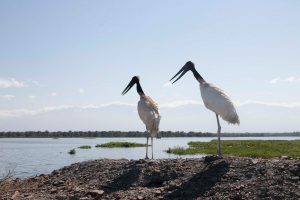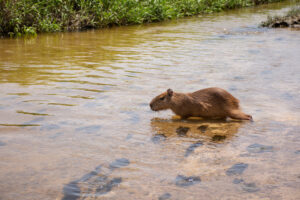Biodiversity protection
For Drummond Ltd., the protection of biodiversity is one of our greatest commitments to the future of the country and the world, and our management contributes to the fulfillment of Sustainable Development Goal 15, which calls for the Life of Terrestrial Ecosystems.

Environmental Compensation Program
At Drummond, we are committed to establishing conservation corridors that connect the highlands of the Perijá Mountains with the Zapatosa Wetlands Complex through comprehensive conservation projects.
Through the strategy of recognizing the ecosystem services provided by rural inhabitants, the Program effectively contributes to the conservation, restoration and/or sustainable use of the sub-basin of the Sicarare, Fernambuco and Casacará rivers; the El Zorro, San Antonio, Las Ánimas and La Mula streams; the Mata de Palma and Zapatosa swamps, through the connection of ecosystems.
Environmental rehabilitation of operations
As part of our principles of environmental responsibility and sustainability, we developed our own strategy for the rehabilitation of the intervened areas.
The objective: to recover and improve the intervened areas, promoting the evolution of successional stages with native species, which in the future will provide shelter and food for the wild species of the area.
 Paujil Reservoir
Paujil Reservoir
The Paujil reservoir has positively changed the natural landscape of the savannas where mining projects are being developed. Since its construction, it has been an oasis for the region and has generated important ecosystem services, among which the following stand out:
Water regulation
The reservoir has ensured that during dry periods the flow of water into the San Antonio stream is not interrupted. It has also facilitated the storage of a large amount of water during rainy seasons.
Biodiversity protection
The reservoir has become a habitat for numerous species of fish, birds, reptiles, mammals, and insects. Today, the Paujil reservoir has become an ecosystem that Drummond carefully studies and protects in order to conserve the flora and fauna of the central region of the department of Cesar.




